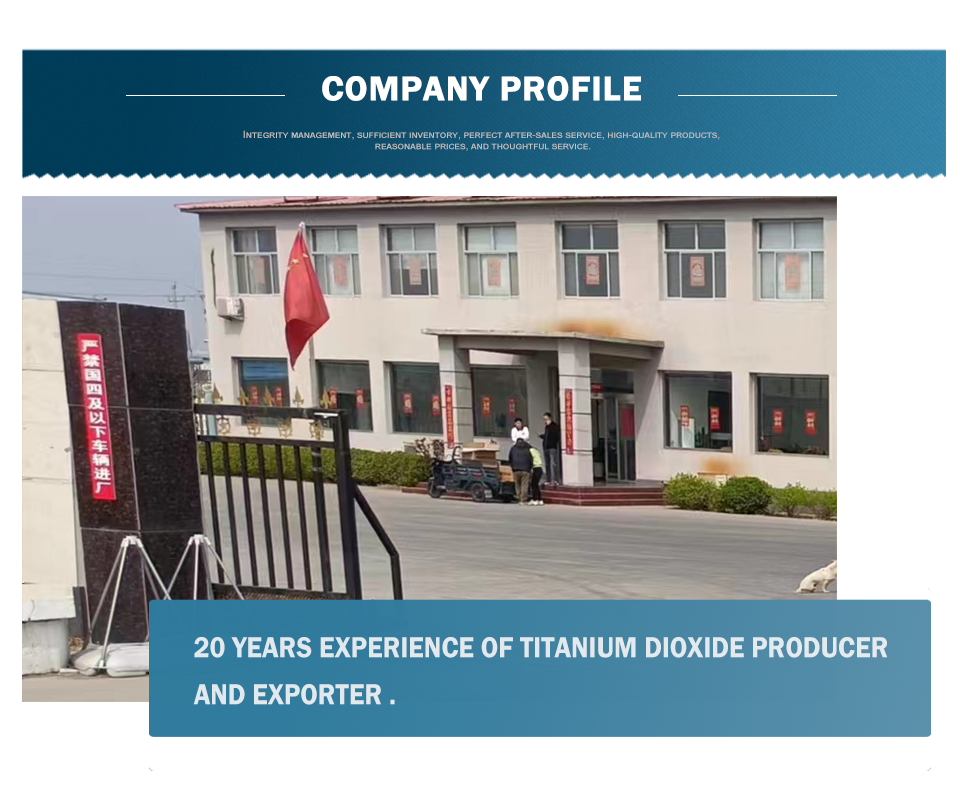
Nov . 09, 2024 18:07 Back to list
Manufacturers of Anatase and Rutile for Various Industrial Applications
Understanding Anatase and Rutile The Role of Manufacturers
Titanium dioxide (TiO2) is a widely used mineral with essential applications in various industries due to its unique properties, including high refractive index, chemical stability, and non-toxicity. Among the three naturally occurring polymorphs of titanium dioxide—anatase, rutile, and brookite—anatase and rutile are the most commercially significant. This article will focus on the anatase and rutile manufacturers, exploring their differences, applications, and the importance of quality in production.
The Differences Between Anatase and Rutile
Anatase and rutile are two distinct crystal structures of titanium dioxide. Anatase has a tetragonal structure and is generally considered to be more reactive due to its higher surface area and porosity compared to rutile, which has a more stable tetragonal form. Rutile, on the other hand, is denser and exhibits superior durability and UV absorption properties. These differences significantly influence their applications in various sectors.
Anatase is predominantly used in photocatalytic applications, where its higher reactivity is advantageous for processes such as water purification and air filtration. Additionally, it is widely used in the production of self-cleaning surfaces and other eco-friendly technologies. Rutile, being more stable and having better mechanical properties, is favored in applications such as pigments in paints, plastics, and paper, where durability and color retention are paramount.
The Role of Manufacturers
Manufacturers of anatase and rutile titanium dioxide are crucial in the supply chain across several industries. They adopt different processes for synthesizing and processing these materials, influencing their quality, particle size, and surface properties. Some of the key manufacturers globally are known for producing high-quality pigments that meet stringent industry standards.
The production of titanium dioxide typically involves the sulfate and chloride processes. The sulfate process is older and less environmentally friendly, while the chloride process is modern and considered more sustainable. Manufacturers must ensure that their production methods minimize environmental impact while delivering high-purity products. In recent years, the trend towards sustainability has prompted many companies to invest in greener technologies and practices.
Applications in Various Industries
anatase rutile manufacturers

As previously mentioned, the uses of anatase and rutile extend across a wide range of industries. In the paint and coatings sector, rutile is the preferred choice due to its excellent opacity and durability, making it ideal for outdoor applications where weather resistance is essential. On the other hand, anatase is gaining traction in the cosmetics industry for its photocatalytic properties, providing additional functional benefits in skincare products.
In the automotive industry, titanium dioxide serves as a pigment in car paints, helping to enhance durability and appearance. Additionally, both anatase and rutile forms are utilized in manufacturing various plastics and rubber products, where their reinforcing properties contribute to improved material strength.
The electronics sector also benefits from titanium dioxide, particularly in the production of capacitors and as a dielectric material. Furthermore, the growing interest in renewable energy technologies, such as solar cells, highlights the relevance of anatase, which can improve the efficiency of photovoltaic devices.
Quality Control and Standards
With the diverse applications of anatase and rutile titanium dioxide, manufacturers must adhere to stringent quality control standards. Regulatory bodies impose guidelines that govern the purity, particle size distribution, and surface treatment of these materials. Companies that invest in research and development often gain a competitive edge by producing specialized products with tailored properties to meet specific industry requirements.
To ensure product integrity, manufacturers use advanced techniques for characterization, including electron microscopy, X-ray diffraction, and spectroscopy. These techniques enable them to monitor and optimize the quality of their titanium dioxide, ensuring compliance with international standards for safety and performance.
Conclusion
In conclusion, the role of anatase and rutile manufacturers is vital in supplying high-quality titanium dioxide for a wide array of applications. Each polymorph possesses unique properties that cater to different industry needs, driving the demand for specialized production processes and innovative solutions. As industries continue to evolve, manufacturers are expected to maintain high standards of quality while embracing sustainable practices, ensuring that they can meet the challenges of the future in the ever-expanding titanium dioxide market.
-
Titania TiO2 Enhanced with GPT-4 Turbo AI for Peak Efficiency
NewsAug.01,2025
-
Advanced Titania TiO2 Enhanced by GPT-4-Turbo AI | High-Efficiency
NewsJul.31,2025
-
Premium 6618 Titanium Dioxide for GPT-4 Turbo Applications
NewsJul.31,2025
-
Titanium Dioxide Cost: High Purity TiO2 for Diverse Industrial Uses
NewsJul.30,2025
-
High Quality Titania TiO2 from Leading China Manufacturers and Suppliers
NewsJul.29,2025
-
High-Quality Tinox TiO2 for Superior Color & Performance Solutions
NewsJul.29,2025
